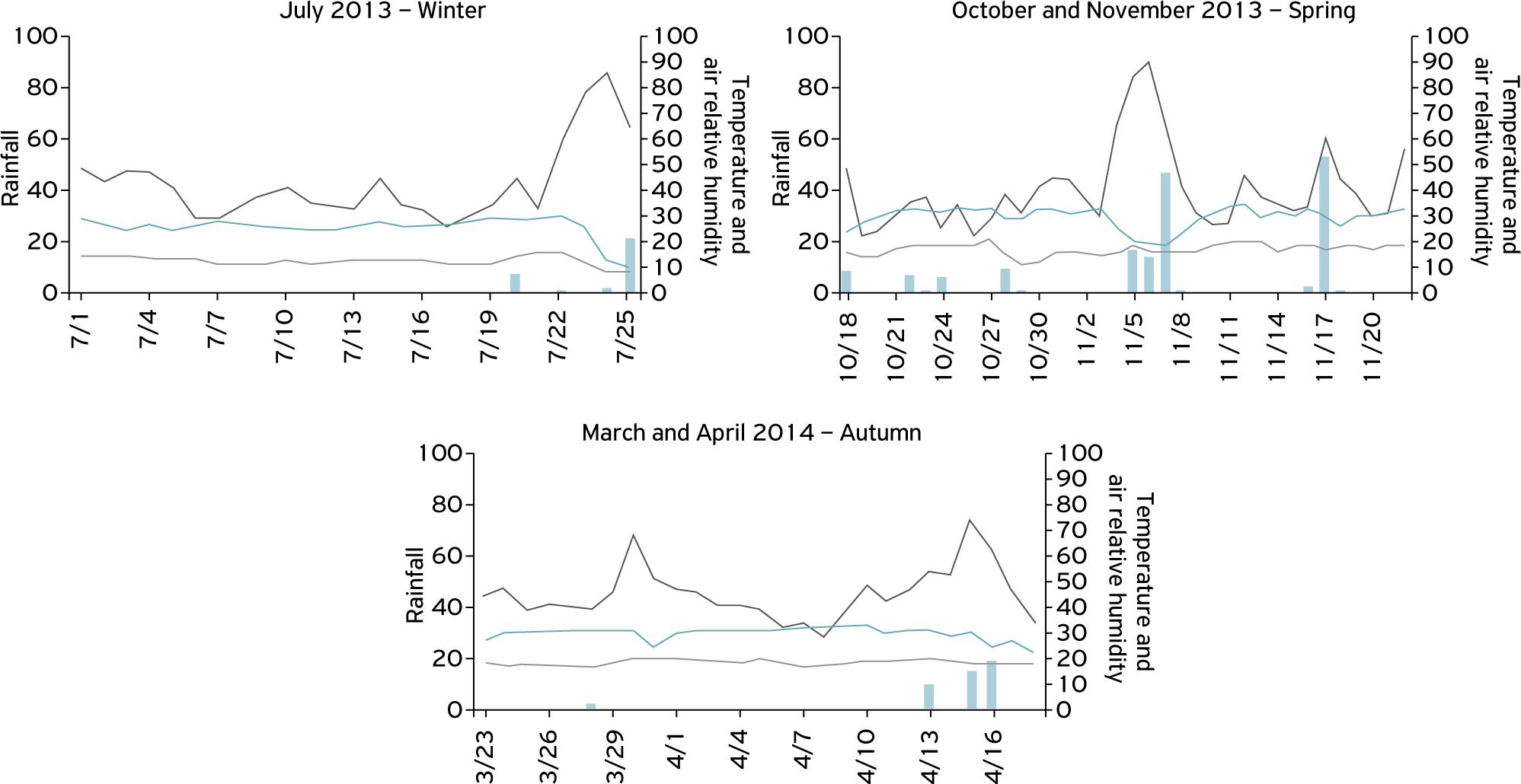ABSTRACT
The survival of eggs and nymphs of Diaphorina citri Kuwayama (Hemiptera: Liviidae) was estimated on young plants (< 1 year) of Citrus sinensis (cultivar Valencia) grafted on Citrus limonia in 3 seasons (Winter and Spring 2013; and Autumn 2014) in Ribeirão Preto, São Paulo State, Brazil. Young shoots with eggs were selected from natural or artificial infestations. Eggs, small nymphs (1st to 3rd instar), and large nymphs (4th and 5th instar) were counted every 3 days. Shoots with large nymphs were caged until the emergence of the adults. The lowest eggs and nymph survival were observed during Winter (0.0%), and Autumn (0.4%); the highest survival rates were recorded during Spring (12.2%). The biotic factor of mortality identified was the parasitism of large nymphs by Tamarixia radiata Waterston (Hymenoptera: Eulophidae), observed in all seasons. Air temperatures (minimum and maximum), and air relative humidity (minimum) could not explain the immature survival differences between Spring (12.2%) and Autumn (0.4%). Rainfall during Spring (165 mm) was higher than during Autumn (48 mm) and may have favored the survival of D. citri in the Spring. Adverse abiotic factors seem to be more important on immature D. citri survival than the biotic factor (parasitism).
KEYWORDS
Asian citrus psyllid; HLB; natural mortality; ecological life table; Tamarixia radiata

